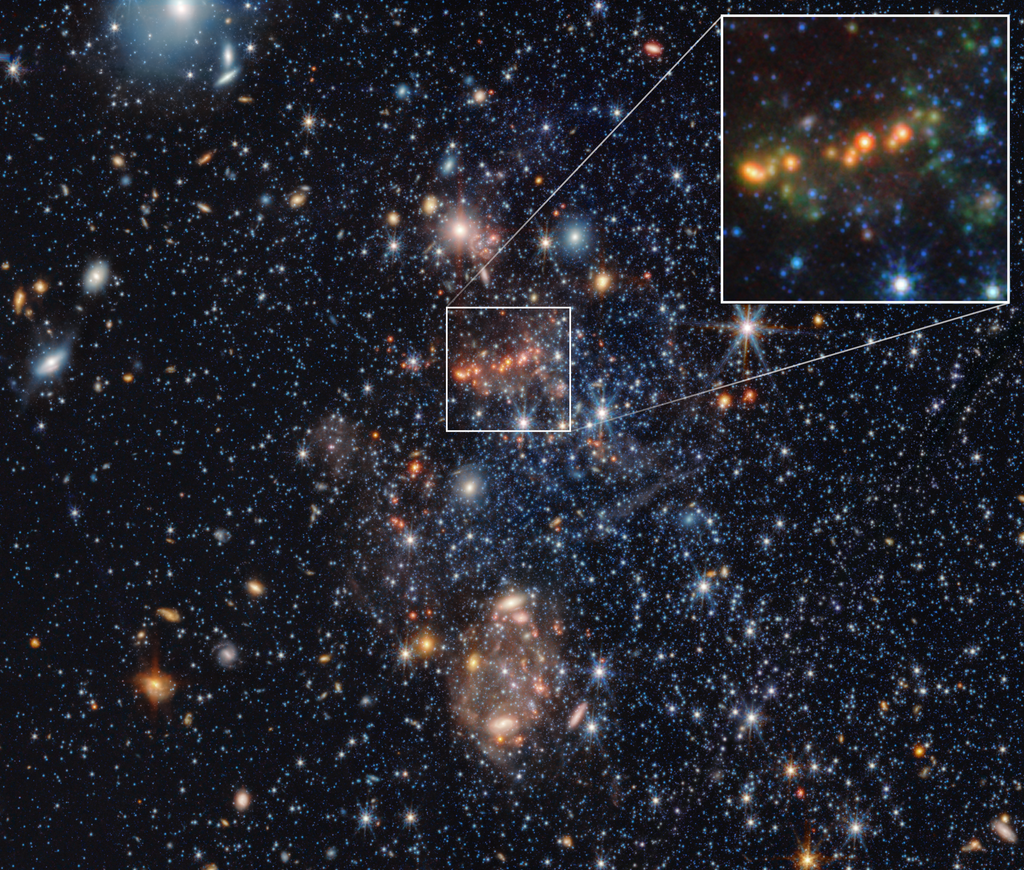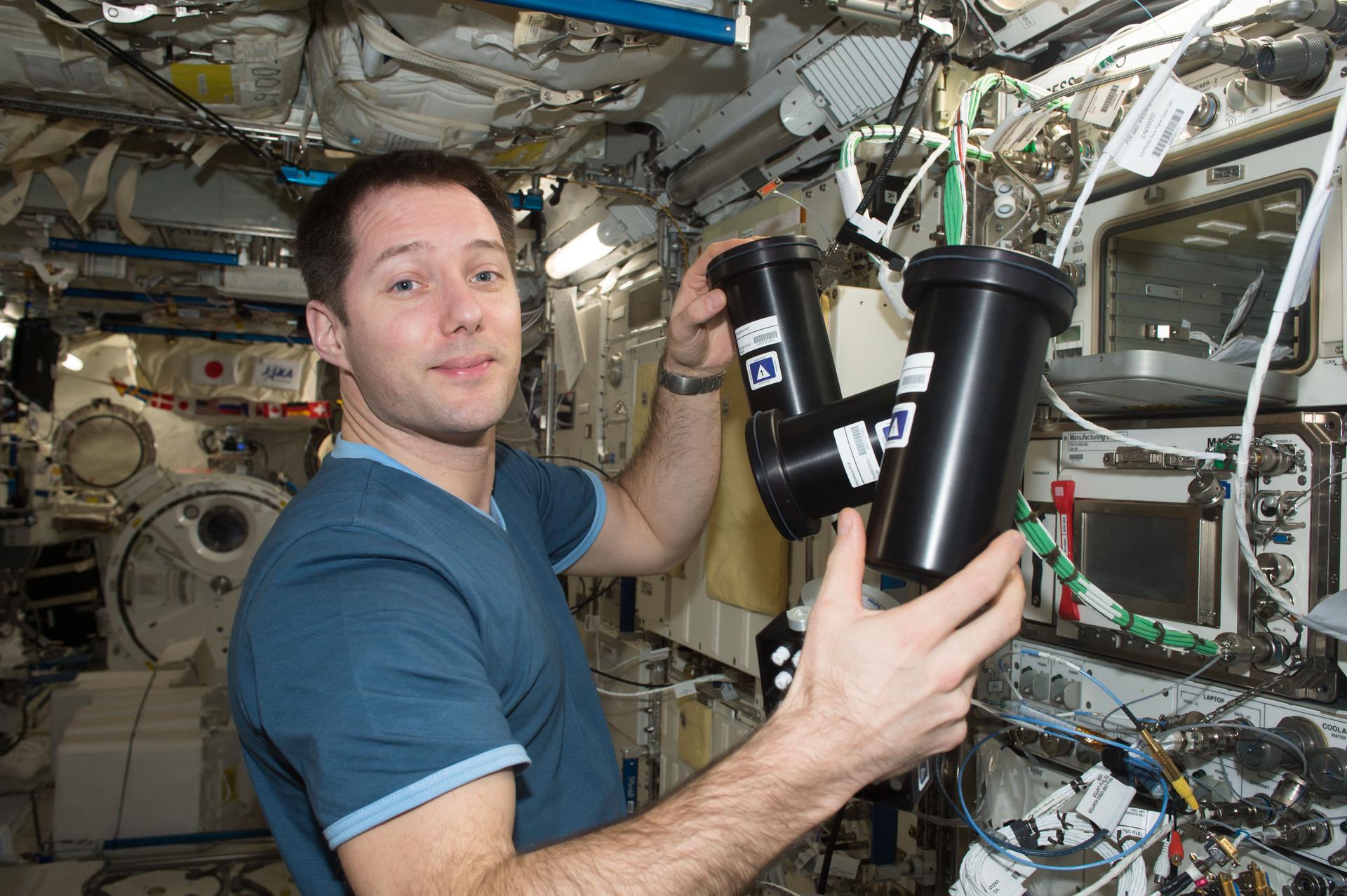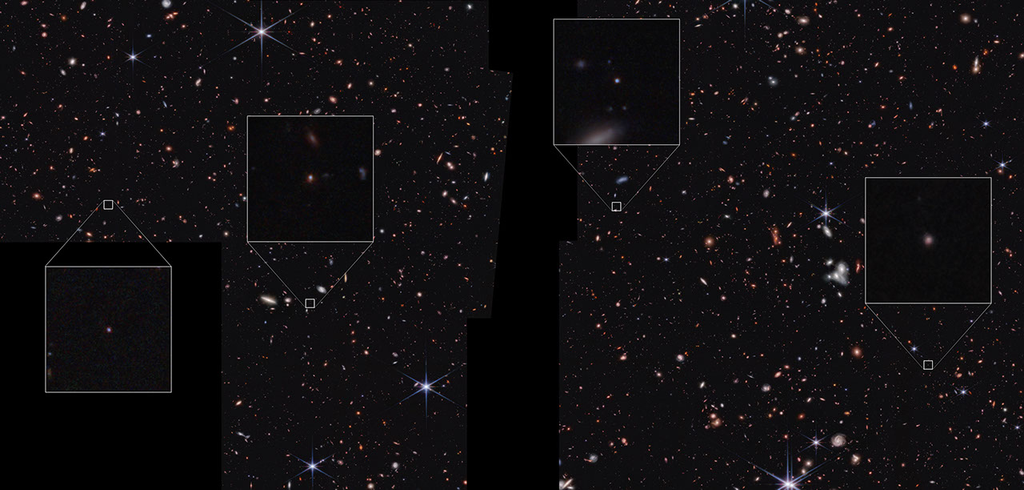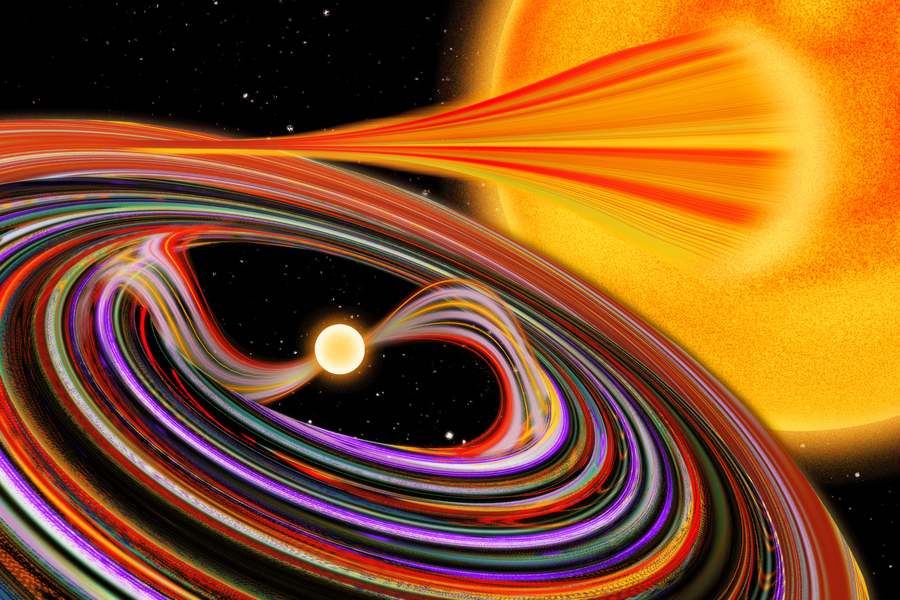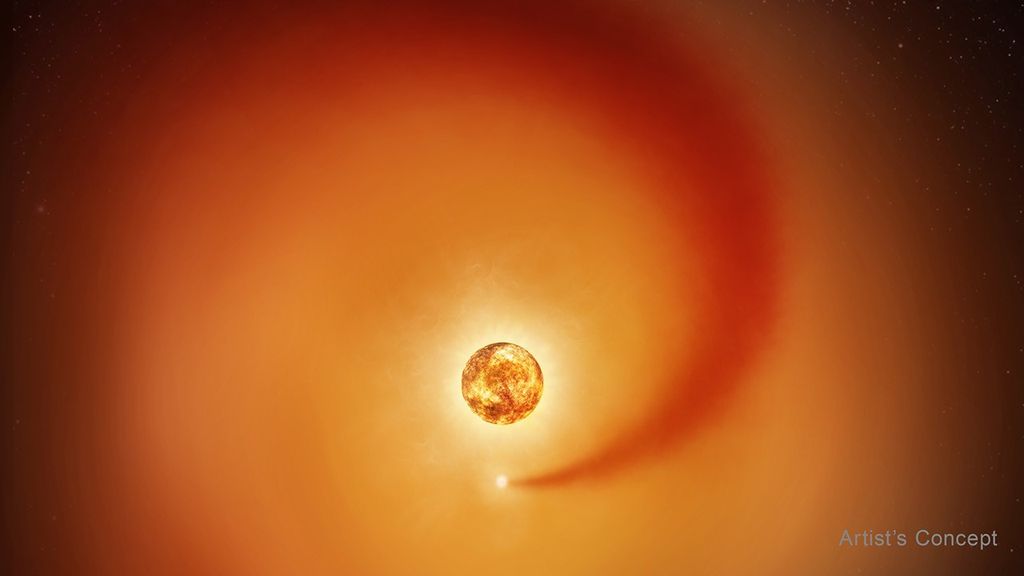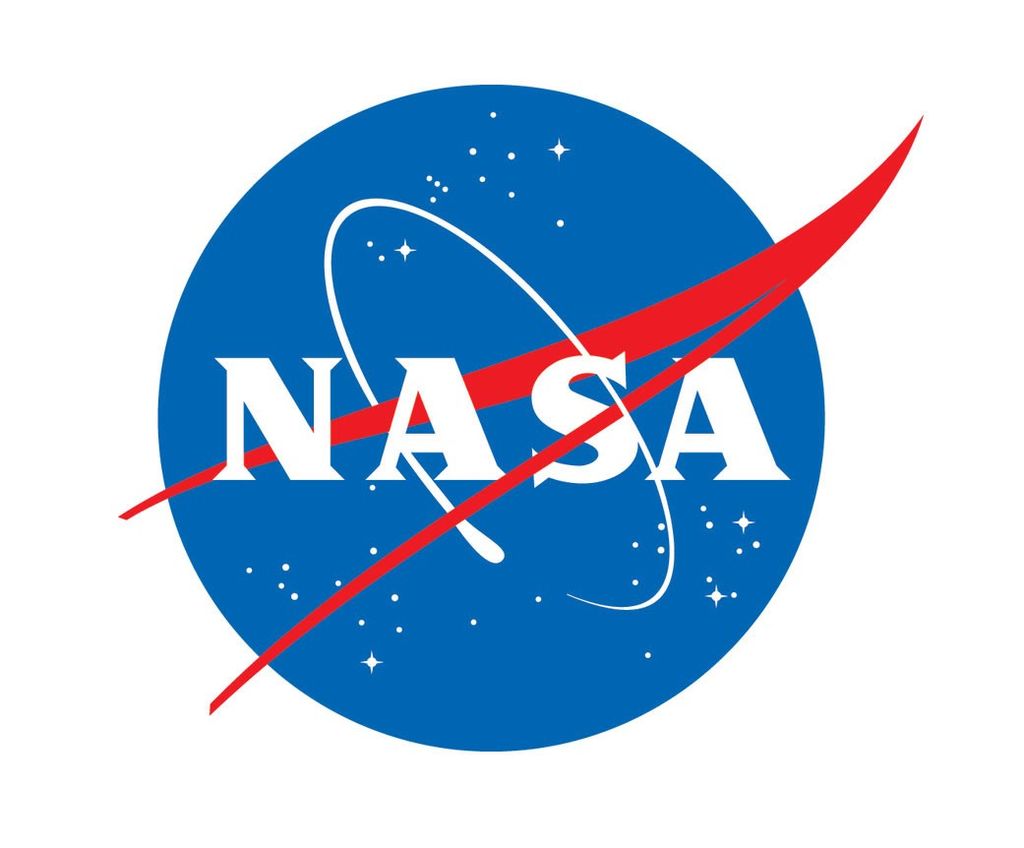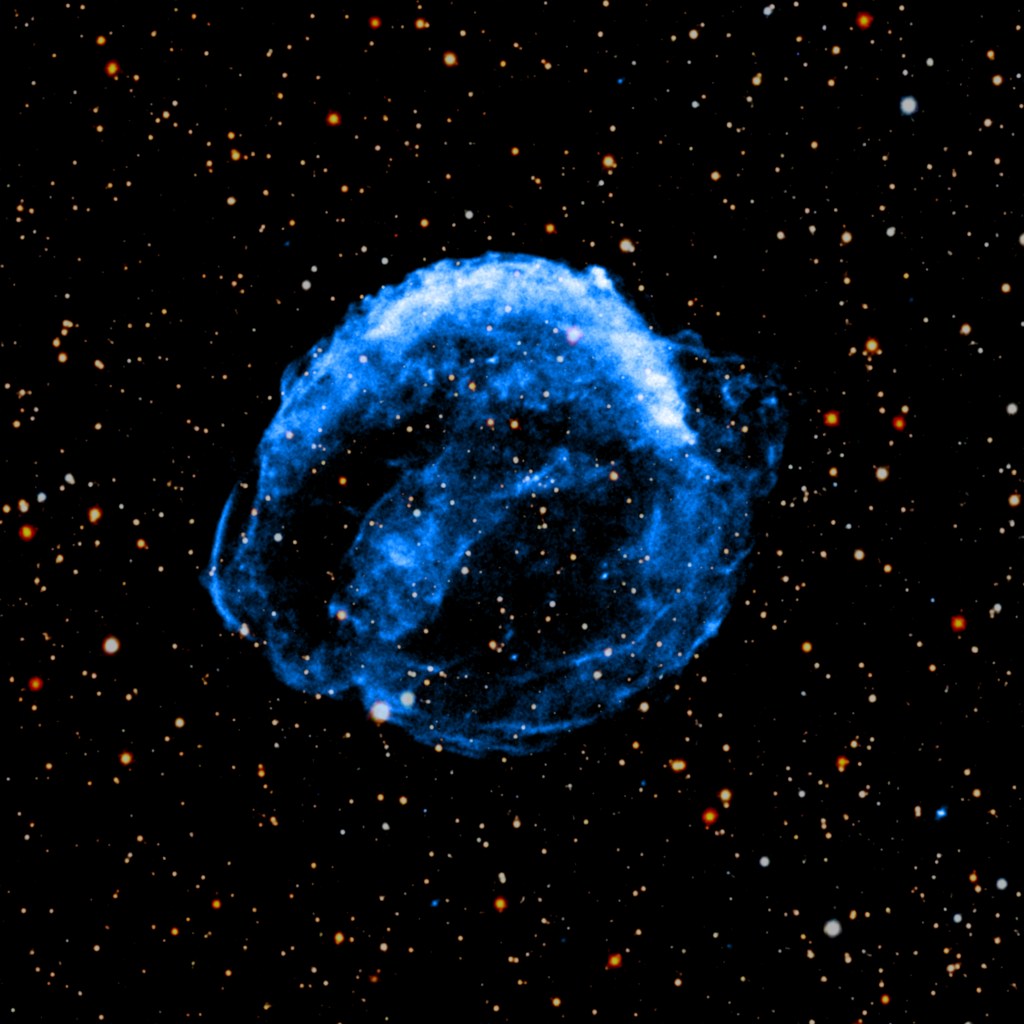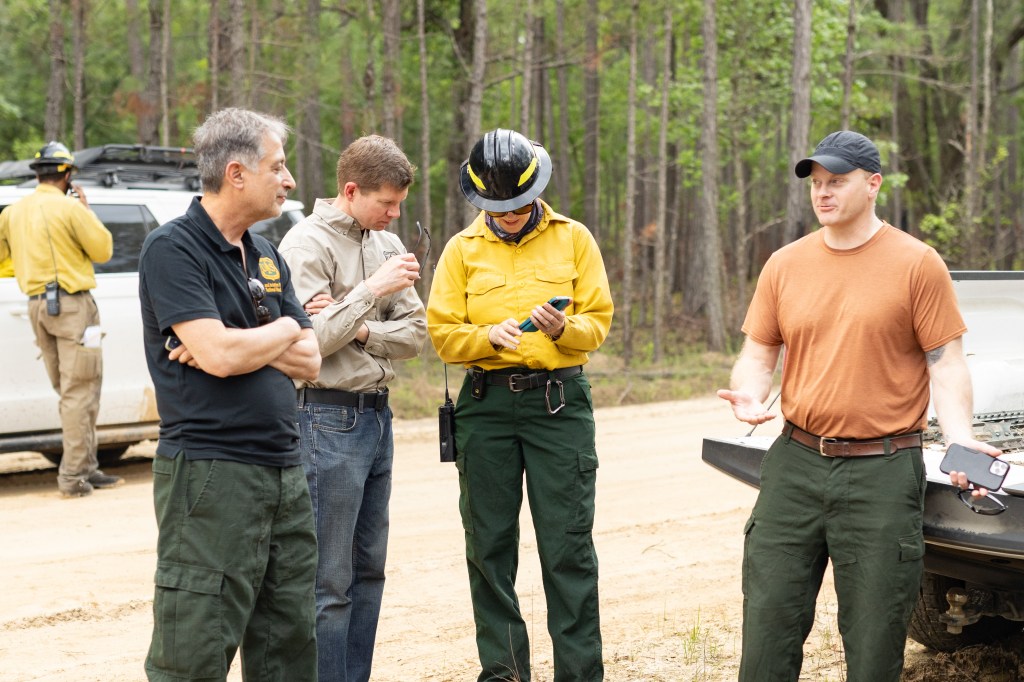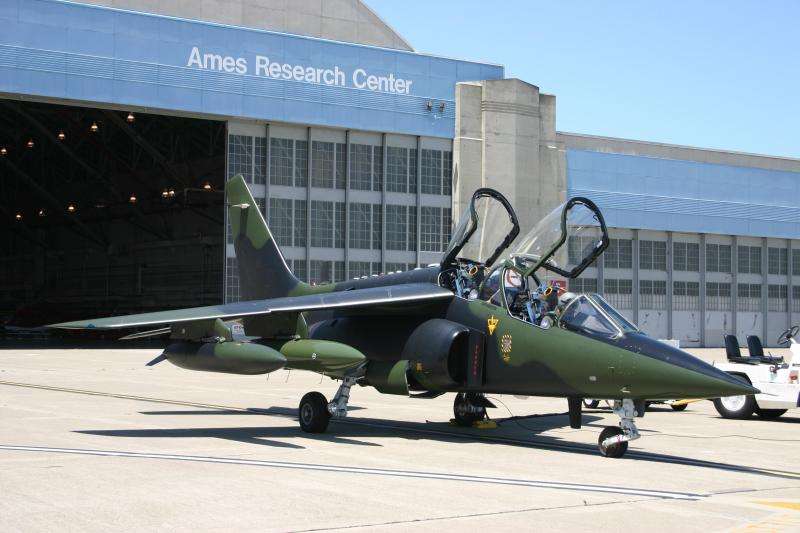1 min read
Supernova Refsdal (Multiply Imaged and Gravitationally Lensed by Galaxy Cluster)

About the Object
- R.A. PositionR.A. PositionRight ascension – analogous to longitude – is one component of an object's position.11h 49m 35.08s
- Dec. PositionDec. PositionDeclination – analogous to latitude – is one component of an object's position.22° 24' 10.94"
- ConstellationConstellationOne of 88 recognized regions of the celestial sphere in which the object appears.Leo
- DistanceDistanceThe physical distance from Earth to the astronomical object. Distances within our solar system are usually measured in Astronomical Units (AU). Distances between stars are usually measured in light-years. Interstellar distances can also be measured in parsecs.9.3 billion light-years or 2.9 billion parsecs (supernova); 5 billion light-years or 1.5 billion parsecs (cluster)
About the Data
- Data DescriptionData DescriptionProposal: A description of the observations, their scientific justification, and the links to the data available in the science archive.
Science Team: The astronomers who planned the observations and analyzed the data. "PI" refers to the Principal Investigator.This image is created from data from the following HST proposals: 13459 T. Treu (UCLA) et al. and the GLASS team, 13504 J. Lotz (STScI) et al. and the Frontier Fields team, 13790 S. Rodney (JHU) et al. and the FrontierSN team, and 14041 P. Kelly (UCLA) et al. and the Refsdal team. The science team includes: P. Kelly (UC Berkeley), S. Rodney (JHU), T. Treu (UCLA), R. Foley (University of Illinois at Urbana-Champaign), G. Brammer (STScI), K. Schmidt (UC Santa Barbara), A. Zitrin (Caltech), A. Sonnenfeld (UCLA), L.-G. Strolger (Western Kentucky University/STScI), O. Graur (New York University/American Museum of Natural History), A. Filippenko (UC Berkeley), S. Jha (Rutgers University), A. Riess (JHU/STScI), M. Bradac (UC Davis), B. Weiner (Steward Observatory/UA), D. Scolnic (University of Chicago), M. Malkan (UCLA), A. von der Linden (Dark Cosmology Centre, Copenhagen/KIPAC, Stanford), M. Trenti (University of Melbourne), J. Hjorth (Dark Cosmology Centre, Copenhagen), R. Gavazzi (Institut d'Astrophysique de Paris), A. Fontana (INAF-OAR), J. Merten (Caltech), C. McCully and T. Jones (UC Santa Barbara), M. Postman (STScI), A. Dressler (Carnegie Observatories), B. Patel (Rutgers University), S. B. Cenko (NASA/GSFC), M. Graham (UC Berkeley), and B. Tucker (UC Berkeley/Australia National University). - InstrumentInstrumentThe science instrument used to produce the data.HST>ACS/WFC and HST>WFC3/IR
- Exposure DatesExposure DatesThe date(s) that the telescope made its observations and the total exposure time.November 3, 2014 - December 14, 2014
- FiltersFiltersThe camera filters that were used in the science observations.ACS/WFC: F606W and F814W WFC3/IR: F105W, F125W, F140W, and F160W
- Object NameObject NameA name or catalog number that astronomers use to identify an astronomical object.SN Refsdal, SN HFF14Ref
- Object DescriptionObject DescriptionThe type of astronomical object.Multiply Imaged, Gravitationally Lensed Supernova
- Release DateMarch 5, 2015
- Science ReleaseHubble Sees Supernova Split into Four Images by Cosmic Lens
- Credit

These images are composites of separate exposures acquired by the ACS and WFC3 instruments on the Hubble Space Telescope. Several filters were used to sample broad wavelength ranges. The color results from assigning different hues (colors) to each monochromatic (grayscale) image associated with an individual filter. In this case, the assigned colors are: Blue: F606W+F814W Green: F105W+F125W Red: F140W+F160W

Related Images & Videos
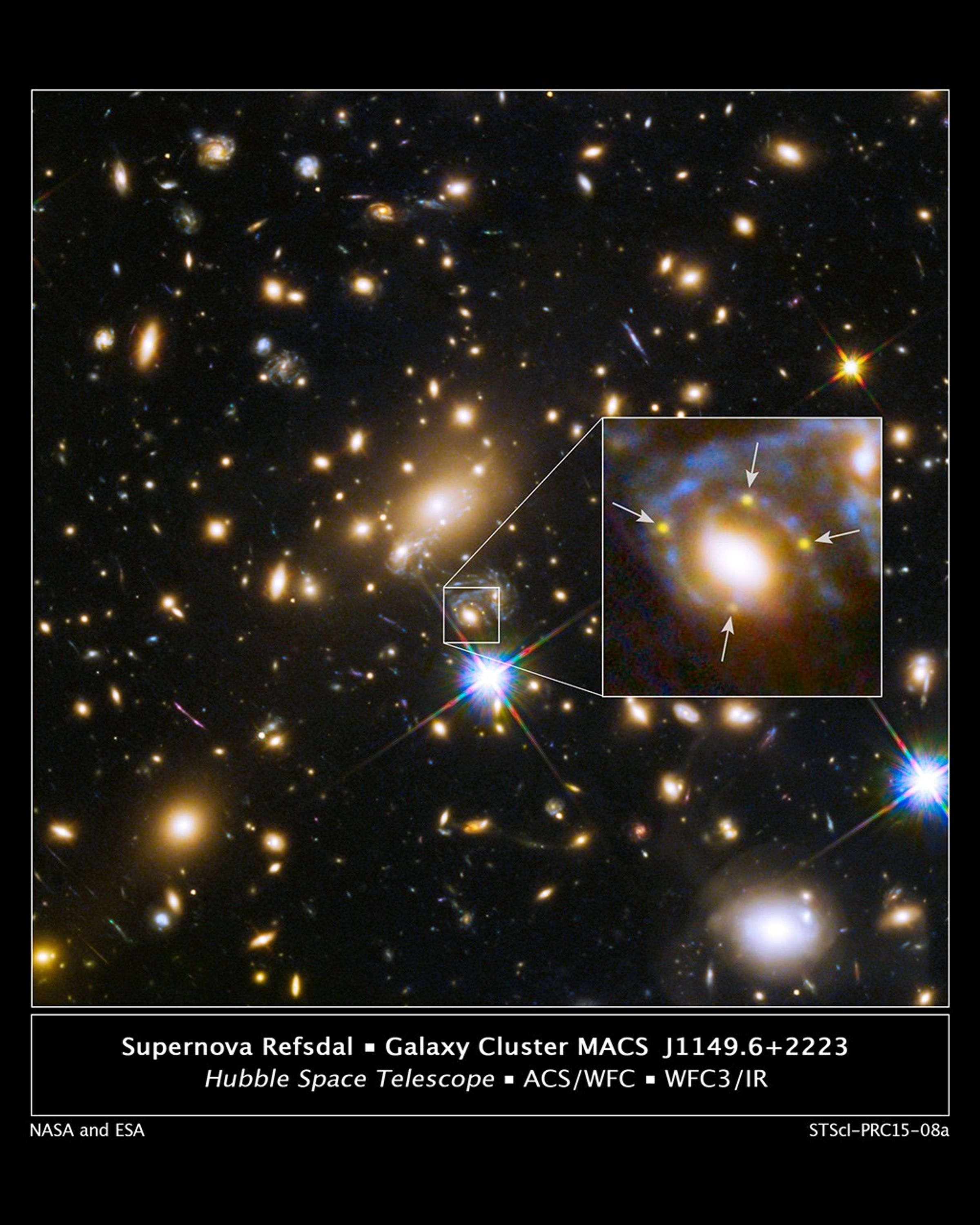
Supernova Refsdal and Galaxy Cluster MACS J1149.6+2223
The powerful gravity of a galaxy embedded in a massive cluster of galaxies in this Hubble Space Telescope image is producing multiple images of a single distant supernova far behind it. Both the galaxy and the galaxy cluster are acting like a giant cosmic lens, bending and...
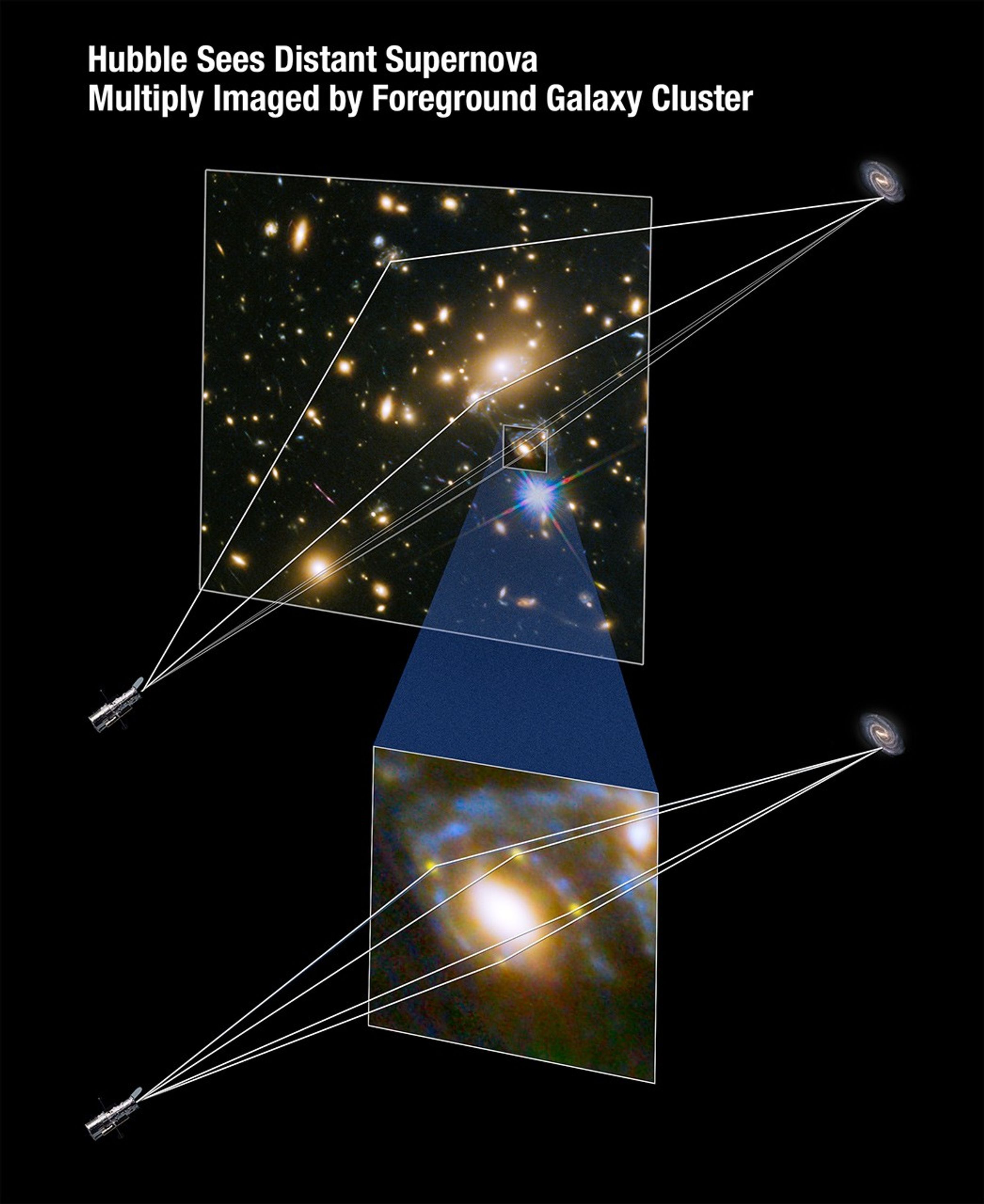
Hubble Sees Distant Supernova Multiply Imaged by Foreground Galaxy Cluster
These illustrations show how the powerful gravity of a massive galaxy cluster bends and focuses the light from a supernova behind it, resulting in multiple images of the exploding star. This phenomenon is called gravitational lensing, and astronomers use it to search for distant...
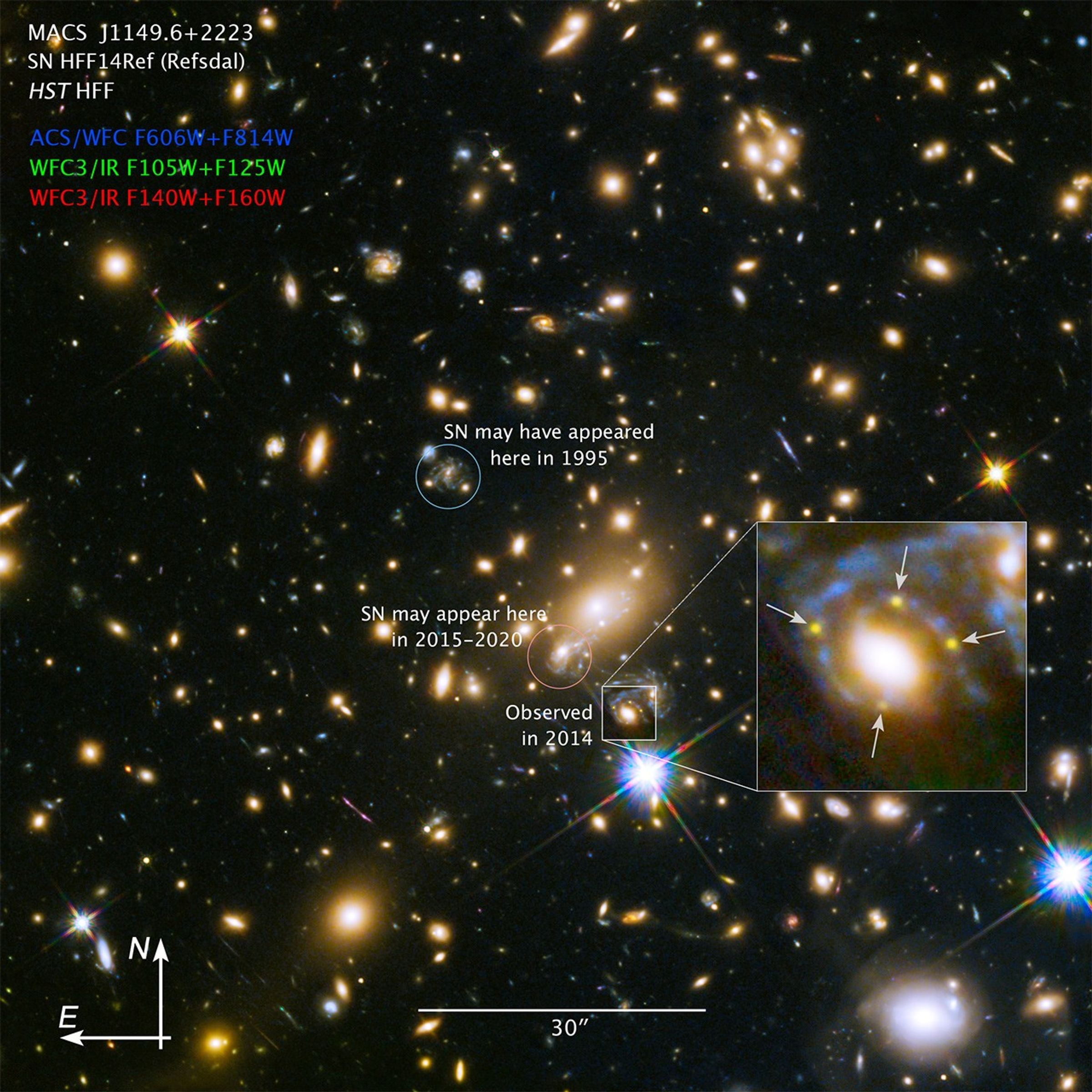
Compass and Scale Image for SN Refsdal and MACS J1149.6+2223
The powerful gravity of a massive cluster of galaxies in this Hubble Space Telescope image is producing multiple images of a single distant supernova behind it. The foreground cluster is acting like a giant cosmic lens, bending and magnifying light from the exploding star in an...
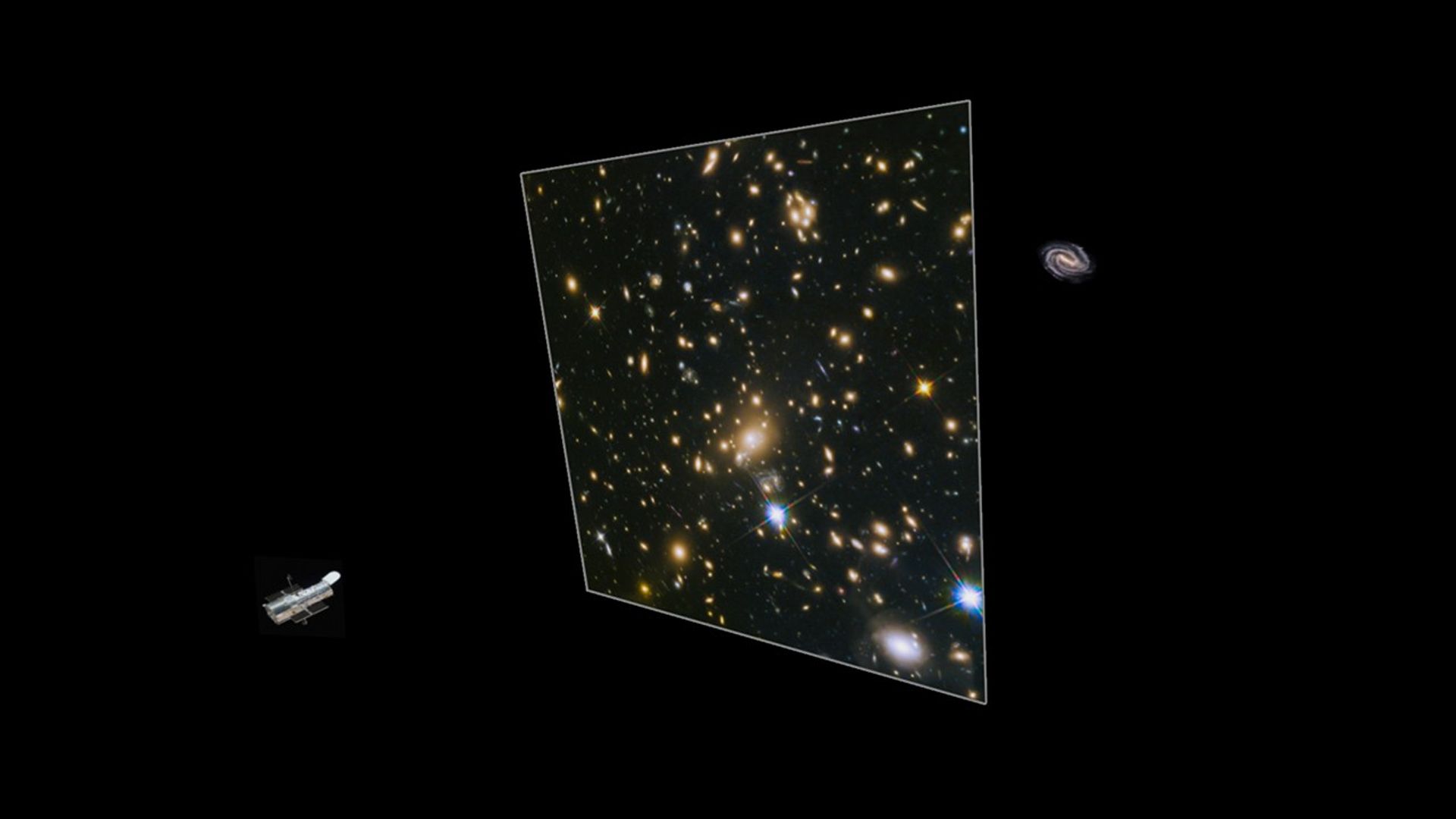
Supernova Multiply Imaged by Galaxy Cluster
This animation illustrates how the powerful gravity of a massive galaxy cluster bends and focuses the light from a supernova behind it, resulting in multiple images of the exploding star. If the cluster were not present, astronomers would detect only the supernova light that is...
Share
Details
Claire Andreoli
NASA’s Goddard Space Flight Center
Greenbelt, Maryland
claire.andreoli@nasa.gov

